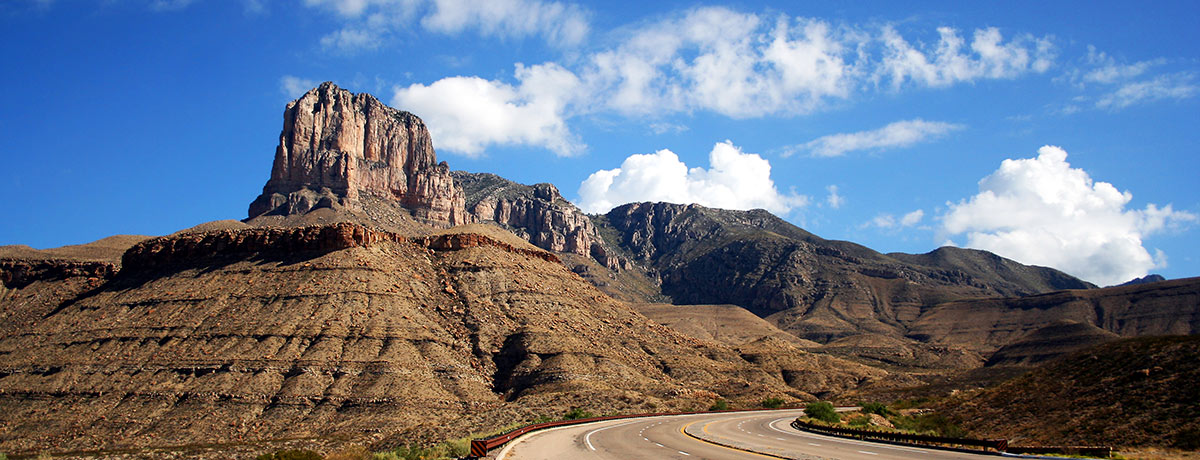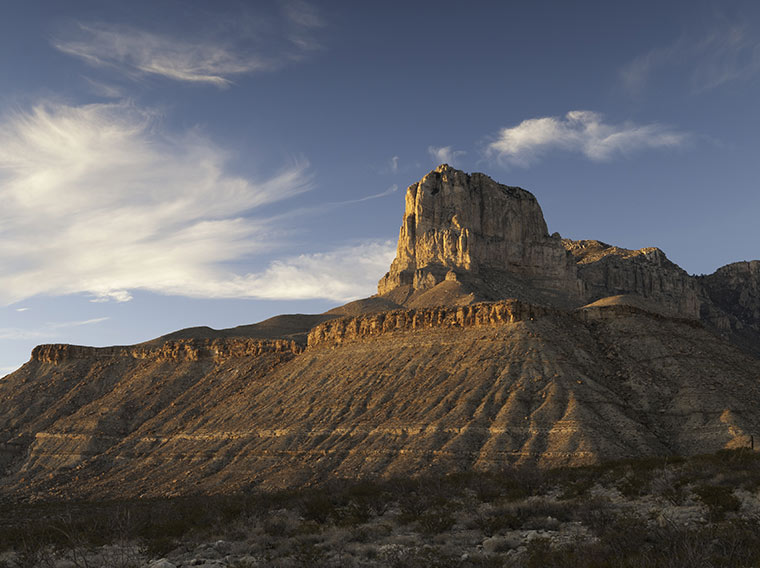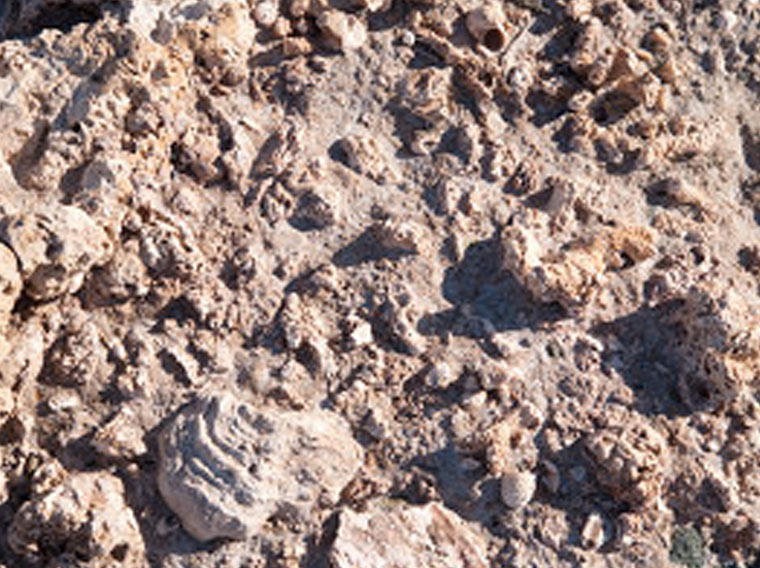Capitan Reef
About 260 million years ago, in this area of southern New Mexico, coral-reef creatures began inhabiting a Permian sea about a half-mile out from shore. As more and more of those creatures died over millions of years, they formed a 400-mile horseshoe-shaped limestone reef called Capitan. It was two to three miles wide and almost two thousand feet high.
Gravity and mountain-building movements caused the reef to slump and crack, opening fissures and fractures. Then the sea began to evaporate, more creatures died, and the reef stopped growing. By 250 million years ago it had disappeared, completely covered by salts, sand and silt.

Used as a signal peak for hundreds of years by travelers in the area.
Eighty million years ago, two plates of the earth’s crust collided, creating the whole Rocky Mountain region. Around Carlsbad, the Capitan reef was lifted 1300 feet above sea level and tilted eastward. Old fissures and joints became enlarged. Over time, sediment on top of the reef eroded, volcanic domes dotted the landscape, and faults began to pull the entire region apart. Underground, cooling thermal waters formed large calcite crystals.
Twenty million years ago, more earth movements pushed the reef up almost vertically, nearly nine thousand feet into the sky of what would become Texas. Then it ran northeast, sloping down to four thousand feet and disappearing underground. This rocky formation, with its deep canyons and flat ridgetops, became the Guadalupe Mountains. Because of these geological permutations over many millions of years, Carlsbad Caverns National Park is now the home of one of the best exposures of Permian-aged fossil reefs in the world and includes one of the continent’s most diverse collections of undisturbed fossilized Pleistocene fauna.

Acid carved the Capitan Reef into the big, glorious caves of the Guadalupes.

This mighty uplifting of the earth’s plates lasted eighteen million years. Fresh water flowed in creating an aquifer, filling the cracks, joints, cavities and fissures. Then, about twelve million years ago, hydrogen-sulfide rich brine from below reached the aquifer, creating hydrogen sulfide gas. When mixed with water, the result was sulfuric acid. It is very rare that caves are formed by the dissolution effects of sulfuric acid, but that is exactly what happened here. The acid carved the Capitan Reef into the big, glorious caves of the Guadalupes—Carlsbad Caverns and Lechuguilla Cave.
Carlsbad Caverns alone has more than 100 caves—many of them with huge chambers studded with formations unsurpassed in variety and beauty. The Park also contains the deepest limestone cave in the United States. These chambers draw hundreds of thousands of visitors each year, from the United States and many other countries of the world. Its remarkable natural wonders have resulted in its being named a World Heritage Site in 1995.



EXPLORE. DISCOVER. MAKE MEMORIES.
